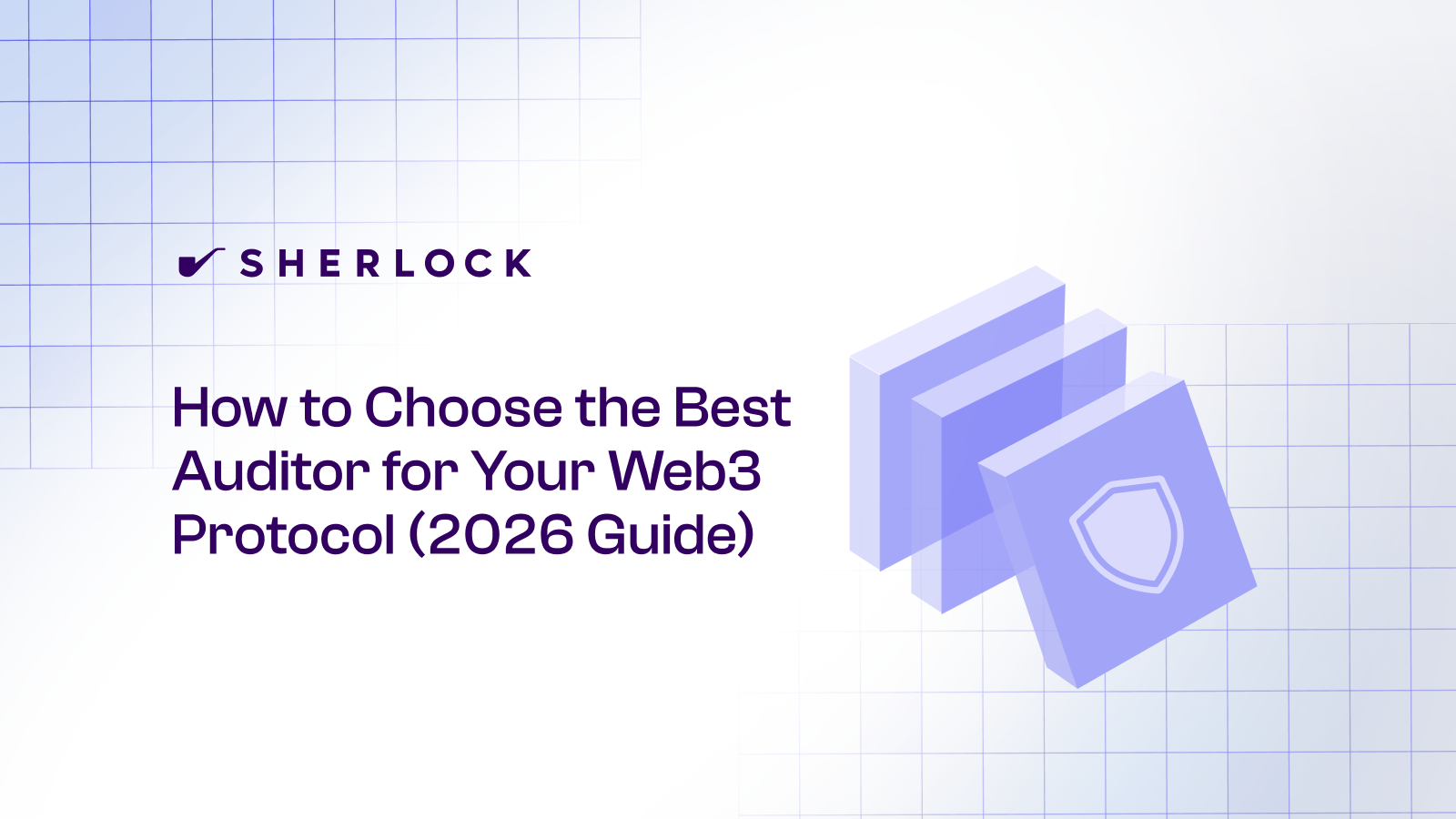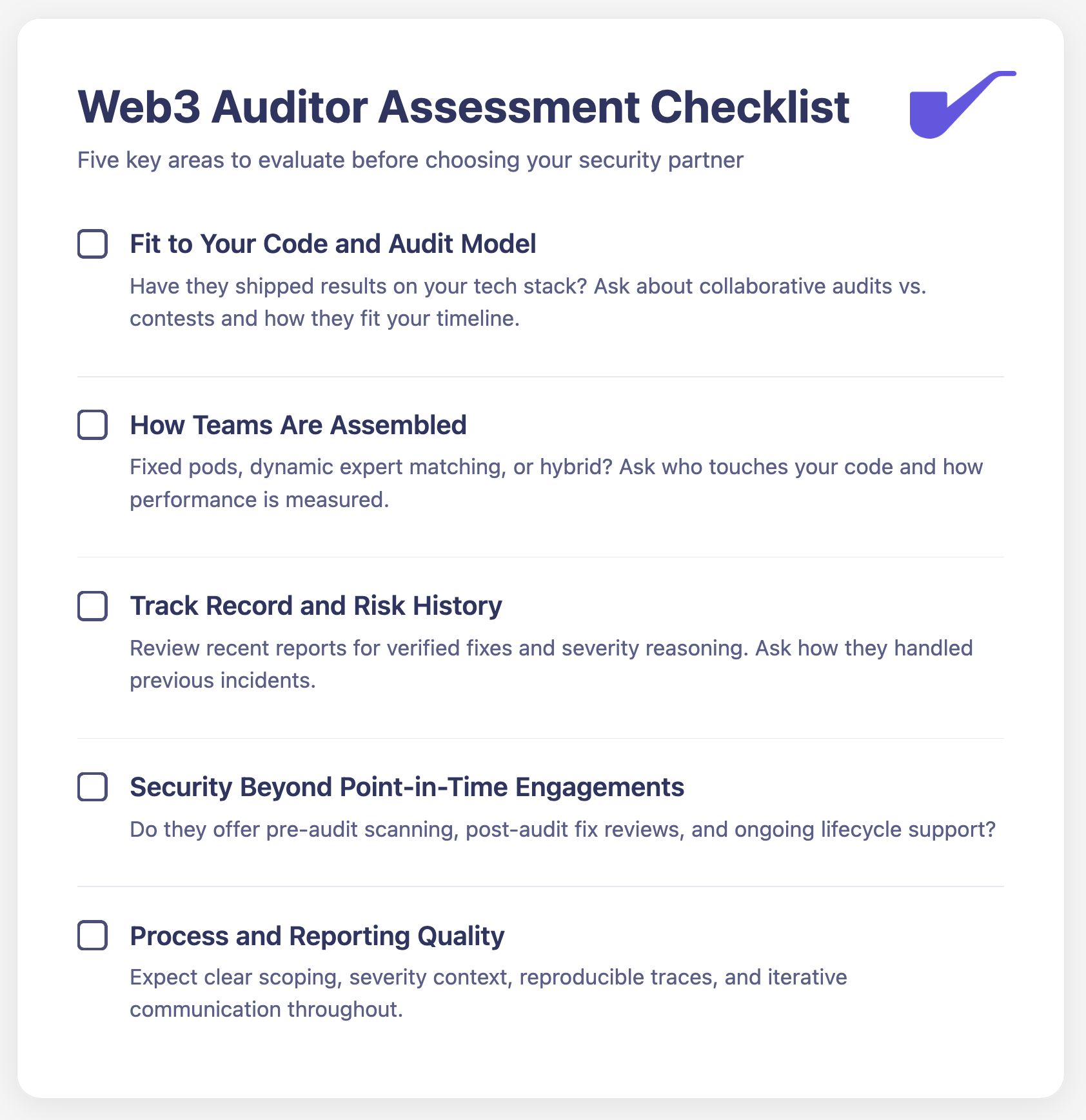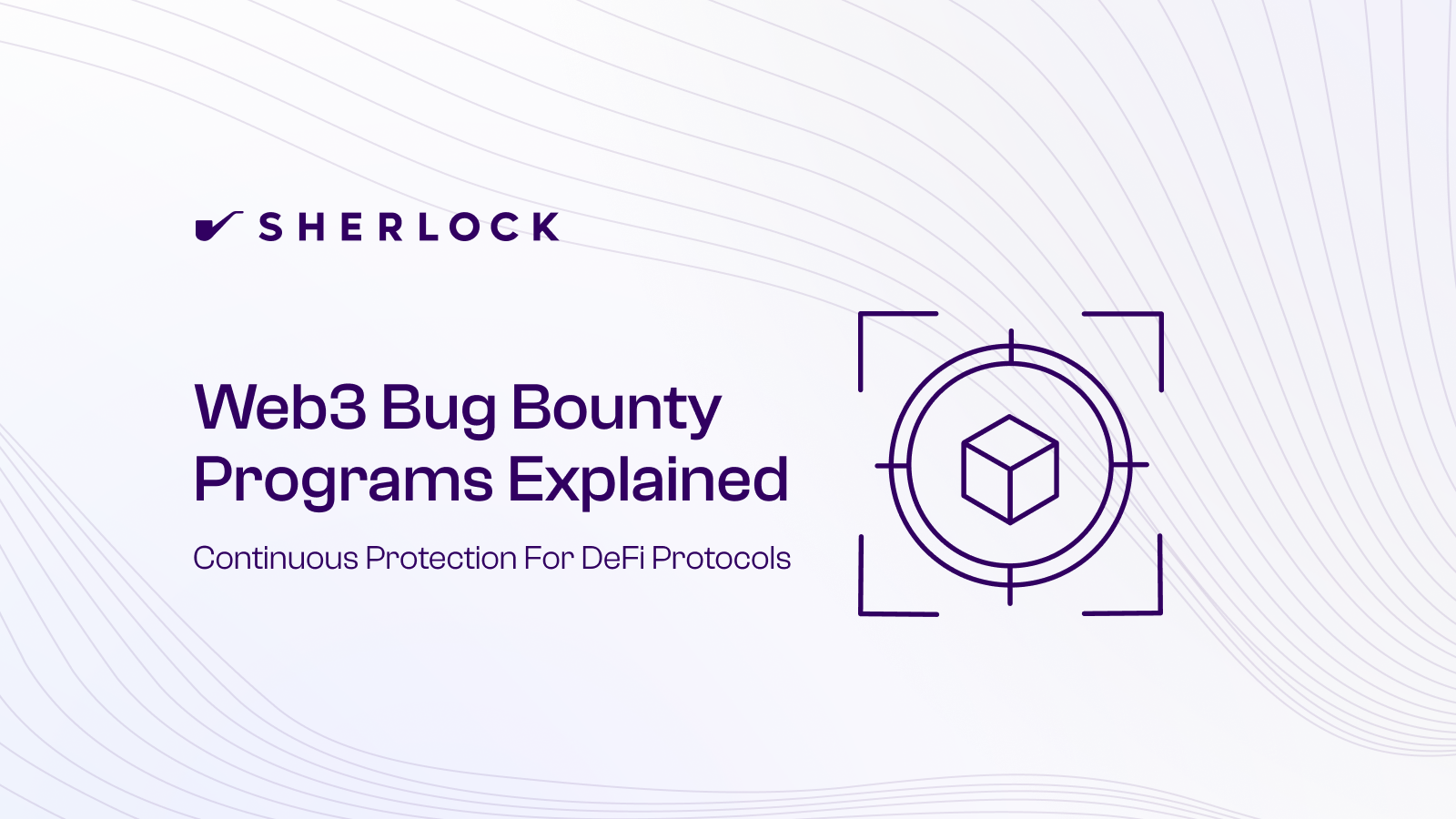FEATURED POST
November 5, 2025
How to Choose the Best Auditor for Your Web3 Protocol (2026 Guide)
Learn how to choose the right auditor in 2026 with Sherlock: Methodology and expertise to long-term accountability and lifecycle support.

Key Takeaways
- Audit pricing isn’t what defines quality. The outcome depends on how deeply a firm reviews your code, who does the work, and how fixes are verified.
- How teams are assembled and scoped matters: ask who will audit your code, how long they’ll need, and why they’re the right fit for your architecture
- The best auditors don’t stop at delivery. They extend protection before and after the report through early analysis, fix reviews, and post-launch support.
- In 2026, transparency and accountability are the true signals of a strong audit partner. You should always know who’s auditing your code and how they’ll stay involved after.
How to Choose the Best Auditor for Your Web3 Protocol (2026 Guide)
In 2026, deciding on an audit partner is an extremely pivotal decision for every Web3 protocol. The outcome of your audit will influence investor confidence, user safety, and how your protocol performs under real world pressure (and be key in determining its long-term safety). The wrong choice can delay launches or leave blind spots that attackers find first.
Most teams start by comparing prices or past clients, but the real differences between auditors are buried in how they work - the depth of their process, the talent they assign, and how accountable they remain after the report is delivered. Today, we wanted to create this guide to outline what separates transactional audit vendors from true security partners, and how to choose the one that fits your protocol’s stage, risk, and goals.
The Role of Auditing in Web3 Development
Audits exist to identify vulnerabilities and strengthen code before it reaches mainnet. In Web3, where software directly handles user funds, an audit is the last safeguard between secure deployment and a potential exploit. A strong audit process can prevent multi-million dollar losses and build lasting trust with investors and users.
Most teams view audits as a final checkpoint before launch. They freeze the codebase, hand it off to an external firm, and wait for a report. Once the issues are fixed, the engagement ends. While that approach is standard, it varies widely in depth and quality depending on the auditor’s process and team composition.
The purpose of an audit is not just to “pass review,” but to reveal how well your system holds up under expert scrutiny. A good auditor does more than list issues. They help teams understand risk, validate assumptions, and improve the overall design. Choosing the right partner starts with knowing what quality auditing actually looks like.
Understanding Audit Costs
Audit pricing in 2026 varies widely, typically ranging from $10K for simple token contracts to $150K+ for complex systems like rollups, bridges, or modular DeFi platforms. Cost is shaped by scope, team seniority, and how many review passes or fix validations you include. A higher quote often reflects more depth: multiple reviewers, stronger verification, and accountability after delivery. Treat price as a signal of process quality, not just a number; a cheap audit that misses one exploit can end up costing millions.
If you need a full guide and pricing breakdown, we recently published a detailed article on smart contract audit costs in 2026 - covering variables, examples, and budgeting recommendations.
What to Look for When You Start the Search
Once you’ve decided to move forward with an audit, the next step is choosing who to trust with your code. This part of the process is where most teams make or break their security outcomes. Here’s how to evaluate potential partners and the criteria that separate surface-level reviews from the firms that actually make your protocol safer.

1. Fit to Your Code and Audit Model
Pick auditors who have shipped results on systems like yours. DeFi, bridges, rollups, NFTs, MPC, ZK - each carries unique failure modes. Ask how they approach the work: collaborative audits for deep architectural review, contests for wide-scale stress testing. Most serious launches use both. Make sure the provider understands how these layers fit your release schedule.
2. How Teams Are Assembled
Some firms use fixed internal teams, while others curate researchers per engagement. The best fit depends on your codebase and risk profile.
- Static pods are fixed groups of individuals who work across code bases and protocols of all varieties.
- Dynamic teams pull from larger researcher networks, matching experts to the exact tech you’re building on.
- Hybrid models combine both, keeping a lead reviewer consistent while rotating specialists in for niche components.
Ask who will actually touch your code and how their performance is measured. Strong providers can show you the logic behind every assignment.
3. Track Record and Risk History
Read recent reports from similar audits. Look for verified fixes, clear severity reasoning, and honest postmortems. Ask how the firm handled previous incidents or disputes. You’re hiring judgment, not just service hours. Proven consistency across different markets and cycles signals a real security partner.
4. Security Beyond Point-in-Time Engagements
The strongest auditors extend protection before and after the report.
- Pre-audit analysis: AI scanning and static review to clean code before humans even start.
- Post-audit validation: fix reviews, follow-up contests, or bounty setup for ongoing visibility.
- Lifecycle support: integration with security during development, pre-launch auditing,, and live triaging after deployment.
Even if you only buy one phase, you want a partner whose system grows with your protocol over time.
5. Process and Reporting Quality
Good process drives good outcomes. Ask about scoping, code-freeze expectations, test coverage, and how fixes are verified. Expect findings that include severity context, reproducible traces, and recommended remediations. Clear, iterative communication during the review and fix process saves your engineers weeks and improves outcomes across every future release.
Common Red Flags When Choosing an Auditor
Even experienced teams can end up with the wrong audit partner if they don’t know what warning signs to look for. Here are three of the most common red flags to avoid before signing any engagement.
1. Guaranteed “Clean” Reports or Fast Turnarounds
Any firm that promises a bug-free report or guaranteed delivery in record time is selling convenience, not security. Strong auditors work within a structured process that takes time to review complex logic, test assumptions, and validate fixes. A rushed audit or one that promises perfection almost always means shallow coverage.
2. No Transparency on Who’s Actually Auditing Your Code
Some providers hide behind brand names or vague “researcher networks.” You should always know who’s reviewing your code, what their experience level is, and how performance is tracked. Firms that can’t show you their reviewer roster or past results are either overextended or outsourcing work without oversight.
3. One-and-Done Engagements with No Follow-Up
Good auditors stay involved after delivery. They verify fixes, clarify findings, and help you validate that patches don’t introduce new risk. Firms that “drop a report and disappear” treat audits as transactions instead of relationships… and that gap is where the biggest vulnerabilities tend to live.
What Matters Most in 2026
The expectations for auditors are higher than ever. In 2026, the firms leading the market go further than finding vulnerabilities - they’re helping teams build stronger codebases and maintain confidence throughout their lifecycle. The audit process has shifted from a one-time report to an ongoing relationship where depth, transparency, and adaptability matter as much as technical skill.
When evaluating partners, prioritize those who:
- Work the way your engineers work. The best auditors integrate directly into your workflow, providing context where it’s needed and adjusting to your development cadence.
- Use AI intelligently, not superficially. Ask how their models are trained, what data they use, and whether the technology actually supports human reviewers instead of replacing them.
- Stay accountable after delivery. Reliable partners verify fixes, provide clarity when code changes, and offer optional follow-up reviews or bounty coordination for continued protection.
From Sherlock’s perspective, the strongest relationships come from firms that treat your security as shared responsibility, not a one-time handoff. The right partner scales with your protocol, improves with your feedback, and helps you ship with confidence at every stage.
Tip: Ask every auditor how they handle post-report work. The ones with a structured process for fix verification and follow-up are the ones that actually improve your security posture.
Conclusion
Dont think of choosing the right auditor as a test of who’s cheapest or fastest: Make the decision on who will actually make your protocol safer over time. A strong audit partner understands your code, adapts to your development cycle, and stands by their work long after the report is published. The best security relationships compound in value, helping your team build stronger code with every release.
To learn about Sherlock’s auditing process and how we support protocol’s security through development, launch, and live operations, get in touch with our team.




